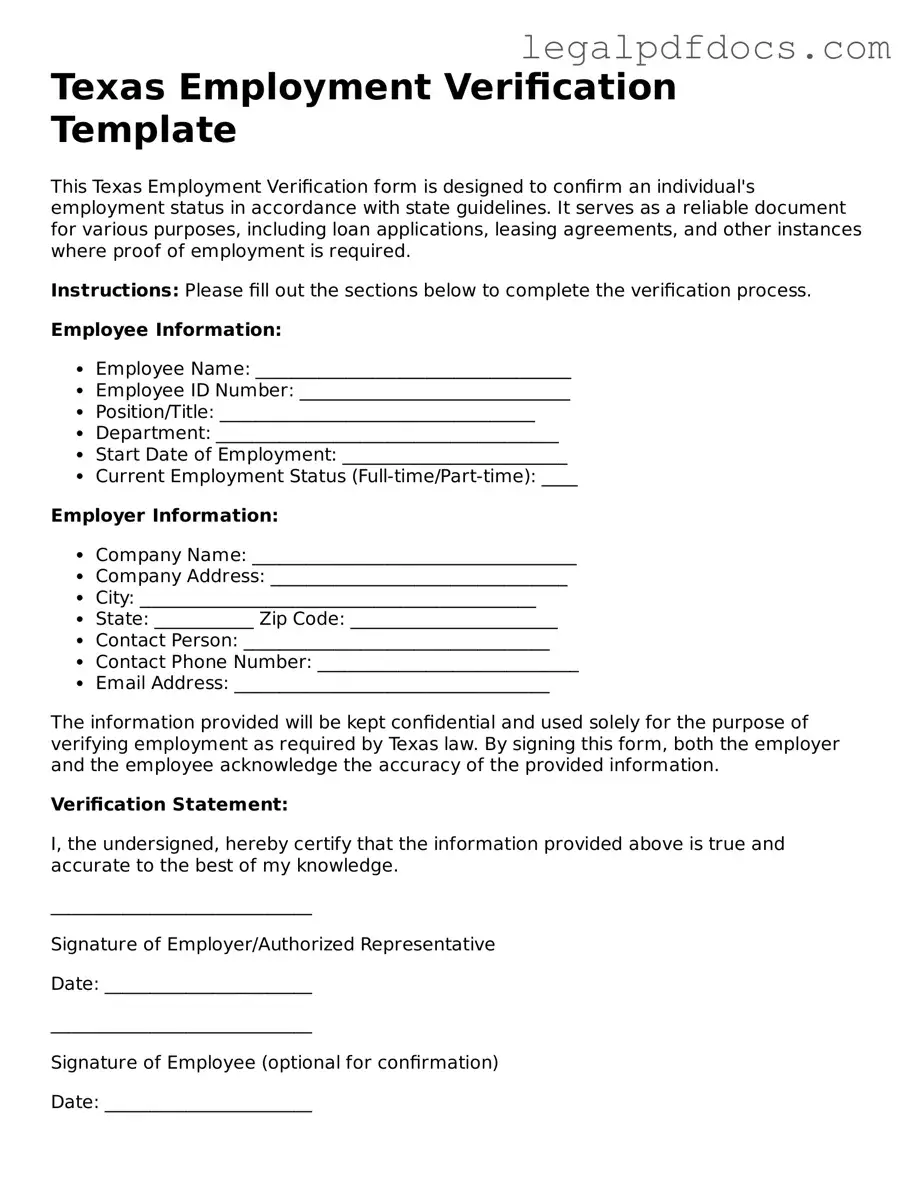The Texas Employment Verification form is an essential document that serves multiple purposes in the employment landscape of the state. This form is primarily used by employers to confirm the employment status of their current or former employees. It provides crucial information such as the employee’s job title, dates of employment, and salary details. Employers often use this verification process when a worker applies for loans, rental agreements, or other situations where proof of income is required. Additionally, the form helps streamline the hiring process by ensuring that potential candidates have accurately represented their work history. Understanding the significance of the Texas Employment Verification form is vital for both employers and employees, as it plays a key role in maintaining transparency and trust in the workplace. By familiarizing oneself with the requirements and implications of this form, individuals can better navigate the complexities of employment verification in Texas.
